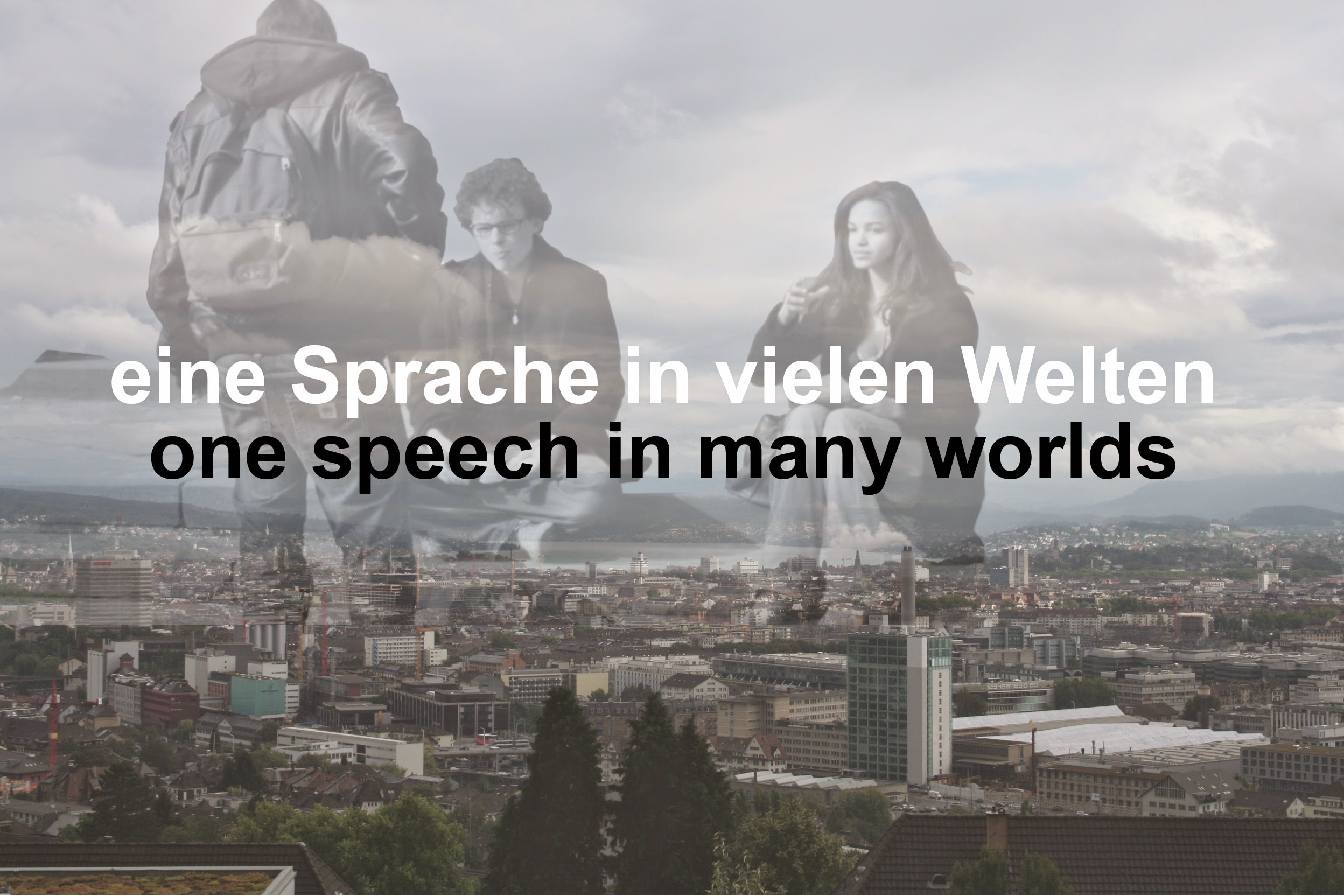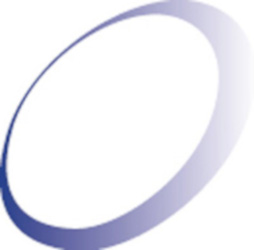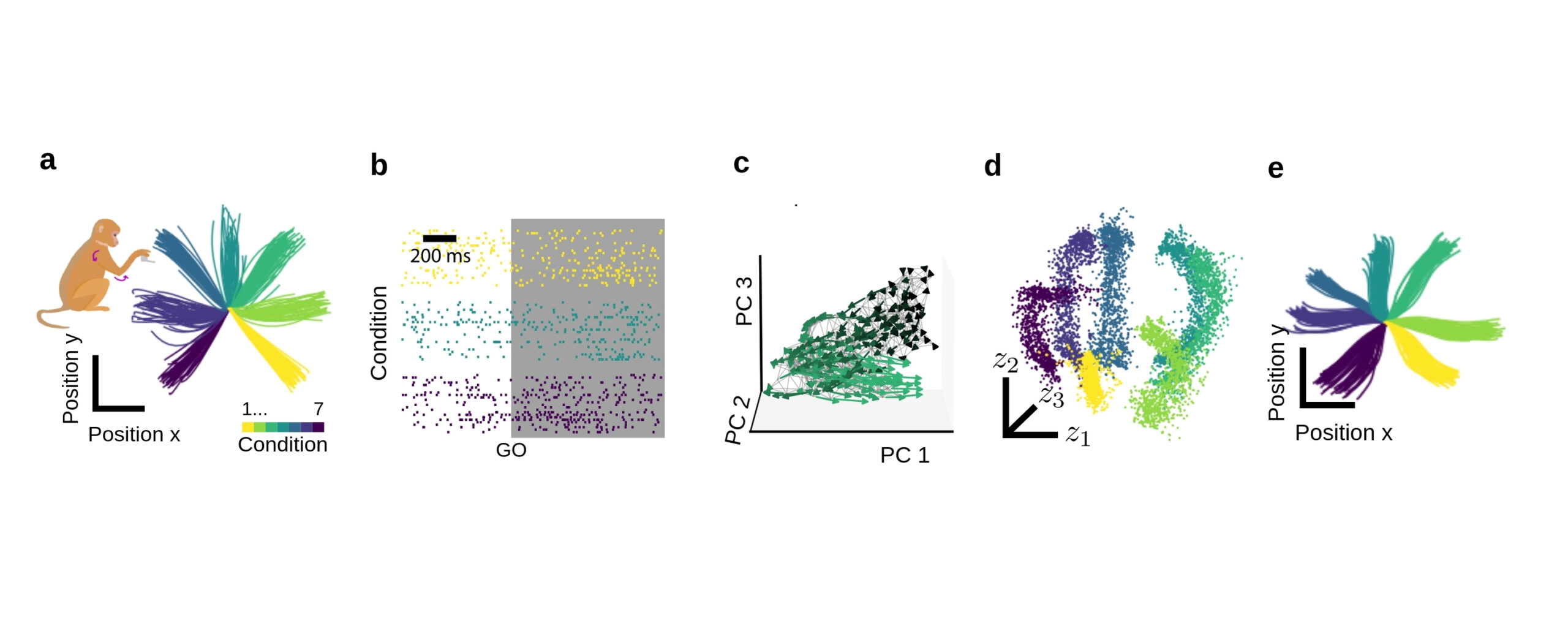Do two brains use the same or different thinking strategies when solving similar tasks? The computer-aided tool MARBLE provides the answer by recognising common structures in thinking without ignoring the unique language of the individual brain. To do this, MARBLE breaks down the signals of the brain cells into characteristic activity patterns and analyses their movement in space and time. The developers, including Robert Peach from the University Hospital of Würzburg, present the technical innovation, which could give people with motor impairments in particular better control over interventions or prostheses, in the renowned journal Nature Methods.
Würzburg/Germany, February 17, 2025 Imagine a crumpled newspaper. It takes up much more space in three-dimensional space, but the same information and news is still on a lower-dimensional structure, the newspaper itself. To make it easier to read, the flat shape of the newspaper must be restored. MARBLE does something similar with the neuronal activity patterns in the brain. The AI method reduces these complex, high-dimensional data sets to simple structures, known as manifolds. MARBLE stands for MAnifold Representational Basic Learning.
Robert Peach, physicist and computational neuroscientist at the Neurological Clinic of the University Hospital of Würzburg (UKW), and Adam Gosztolai, mathematician at the Medical University of Vienna, developed MARBLE together with former colleagues and supervisors from Imperial College in London and the École Polytechnique Fédérale de Lausanne (EPFL) in Switzerland. Gosztolai and Peach present their technical innovation, which could improve everyday life in many ways, as first authors in the renowned scientific journal Nature Methods.
MARBLE recognises and interprets neuronal brain activity
The development of the computer-aided tool MARBLE is based on a central question: Do two brains use the same or different thinking strategies when solving similar tasks? Instead of analysing all neurons individually, MARBLE only looks at sections of activity and compares them between different species and tasks. To do this, MARBLE breaks down the neuronal signals into characteristic activity patterns, which Robert Peach calls ‘puzzle pieces’. To deal with the curved structures that often occur in complex, non-linear brain processes, the scientists use a specialised geometric deep learning network that recognises the puzzle pieces in their dynamics, i.e. their movement in space and time, and puts them into an understandable form.
Finding similarities between different individuals without forcing them into a rigid mould
The researchers tested MARBLE on artificial neural networks, simulated systems and real brain data from primates and rodents. They found recurring patterns that are related to thought processes such as decision-making or adapting to new situations. ‘This means that when different animals use the same strategy, they share these puzzle pieces but embed them in their own, individually curved structure,’ explains Robert Peach. And that is the decisive advantage over previous methods. MARBLE can recognise a common structure in thinking without ignoring the unique ‘language’ of each brain.
While conventional methods often only look at static patterns or average data across many experiments, MARBLE recognises temporal changes in the signals and can therefore detect subtle differences between thinking strategies. Peach: ‘Our approach works with only a few external guidelines and without fixed rules of behaviour, so that the analysis remains more objective.’
More precise control of prostheses and other aids
People with motor impairments in particular could benefit from this technical innovation. A better understanding of how the brain works over time could lead to the development of more advanced brain-computer interfaces that enable more precise control of prostheses and other aids. This is one of the aims of the transregional Collaborative Research Centre (CRC) TRR 295 ReTune, funded by the German Research Foundation (DFG), in which the UKW and Charité – Universitätsmedizin Berlin are working together on specific aspects of motor network disorders. Robert Peach’s research was therefore also funded as part of ReTune. Prof Dr Jens Volkmann, Director of the Clinic and Polyclinic for Neurology at the UKW, is the deputy spokesperson for the TRR, which entered its second funding phase last summer.
Advances in healthcare, accessibility and human-computer interaction
The research project also helps to better understand how the healthy brain controls attention and learns new things. These findings could inspire new approaches for improving cognitive performance or rehabilitation after strokes. Even everyday technologies – such as digital assistants or wearable devices – could benefit from algorithms that are based on how the brain manages complex tasks in real time. Robert Peach summarises: ‘If we learn to decode the hidden patterns behind neural processes, we can develop tools that interact more naturally with our minds and bodies – with potential advances in healthcare, accessibility and human-computer interaction.’
In the next step, the team wants to apply MARBLE to more complex data sets and different species and work closely with clinical partners to explore its potential for the treatment of movement disorders. In addition, the underlying mathematical methods are to be further developed and refined in order to gain more precise insights into the dynamic processes of the brain.
The research project was funded by the DFG as part of ReTune as well as the Engineering and Physical Sciences Research Council (EPSRC), the Human Frontiers Science Programme and the Swiss Blue Brain Project.
Information on the graphic:
Visualisation and decoding of neuronal activity in the brain of a monkey while it moves its arm: (a) movement of the hand in seven different directions; (b) activity patterns of single neurons in the premotor cortex for three of these movements, the shaded area shows the analysed traces after the GO cue for the monkey; (c) representation of the neuronal data as a vector field showing the changes in firing rates over time; d) simplified representation of the neural data in a single session; MARBLE shows a latent circular arrangement of the data in circular and temporal order reflecting the spatial movements; e) precise linear decoding of the hand movements from the latent representations. Gosztolai & Peach et al. et al. MARBLE: interpretable representations of neural population dynamics using geometric deep learning. Nat Methods (2025). (https://doi.org/10.1038/s41592-024-02582-2)
Originalpublication:
Gosztolai, A., Peach, R.L., Arnaudon, A. et al. MARBLE: interpretable representations of neural population dynamics using geometric deep learning. Nat Methods (2025). (https://doi.org/10.1038/s41592-024-02582-2)
Research Briefing: (https://www.nature.com/articles/s41592-024-02581-3)
Weitere Informationen:
(https://sfb-retune.de/de/home-de/) – transregionale Sonderforschungsbereich (SFB) TRR 295 ReTune
ImageSource
Visualisation and decoding of neuronal activity in the brain of a monkey while it moves its arm. Gosztolai & Peach et al. et al. MARBLE. Nat Methods (2025). (https://doi.org/10.1038/s41592-024-02582-2)


